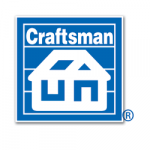Questions for HomeAdvisor
If you do any residential work, you know the name. HomeAdvisor is a Web directory of local contractors. The idea behind HomeAdvisor is simple. Read what your neighbors say about contractors they know. Then get a quote from the contractor of your choice.
HomeAdvisor traces its roots back to Angie’s List. In 1995, Angie Hicks went door-to-door in Columbus, Ohio, signing up anyone who wanted to see her list of recommended contractors. In the first year, Angie got over 1,000 owners to pay a fee and sign-up. A business was born.
Soon Angie met a venture capitalist with access to millions in investor funds. You may not have heard of ServiceMagic, or Instapro, or MyHammer or HomeStars, or MyBuilder, or Handy. All offer an on-line list of contractors. And all are now part of HomeAdvisor — listed on the NASDAQ as ANGI Homeservices, Inc.
Make no mistake, pairing up customers and contractors is big business. Home Advisor claims millions of subscribers (owners), more millions of paid members (contractors), $1.326 billion in annual revenue and 4,500 employees. Headquarters are in Denver, Colorado.
Those 4,500 employees are why you’ve heard of HomeAdvisor. When H-A discovers you do home improvement work, your business goes on their call list. Expect multiple calls from HomeAdvisor sales reps until you buy in.
With all that revenue from contractors, HomeAdvisor elected to turn their directory into a freemium service. Since 2016, any owner can scan the list of contractors and check the reviews. No cost. But contractors had to pay to get listed. And it’s not cheap. Annual charge is several hundred dollars plus a fee of $25 to $75 per lead. Contractors report paying $1,000 a month or more for the listing. Money well spent? Click here to read contractor comments.
Worse Still
Until recently, HomeAdvisor only matched contractors with owners. The owner and the contractor had to strike a deal. Now H-A offers another option, “upfront” pricing:
- H-A quotes a fixed price for the work without ever seeing the job.
- H-A selects the tradesperson to do the work.
- H-A collects in full before anyone arrives on site.
Obviously, H-A has to limit these “upfront” jobs to small, simple tasks, like cabinet repair, patching walls or ceilings, replacing a plumbing or electric fixture or re-glazing a window.
If you’ve dipped into this blog any time in the last ten years, you’ll recognize some issues with H-A’s new “upfront” business model:
- H-A won’t reveal the names or numbers of tradespeople sent to do the work. There’s no way to check references or license status. Is that a little weird from a company built on contractor references?
- Any agreement to do construction work at a set price is a construction contract. Every state regulates home improvement contracts. Most states limit the initial payment and require written contracts with plenty of notices and disclosures. Where is the H-A written contract?
- Any time a tradesperson makes improvements to an owner’s primary residence, law in every state gives that tradesperson a construction lien. When work will result in a lien on an owner’s primary residence, federal law requires delivery of a Reg-Z notice – in duplicate. Where’s the three-day right to cancel?
In short, HomeAdvisor’s new “upfront” model ignores state law, violates federal regulations and defies common sense. Home Depot and Lowes don’t make mistakes like that. Installation services from both come with contracts that comply perfectly with both state and federal law.
My question: How long can a publicly-traded company like HomeAdvisor skate around state and federal law?
If you’re serious about staying legal, no matter the state or type of work, have a look at Construction Contract Writer. The trial version is free.

